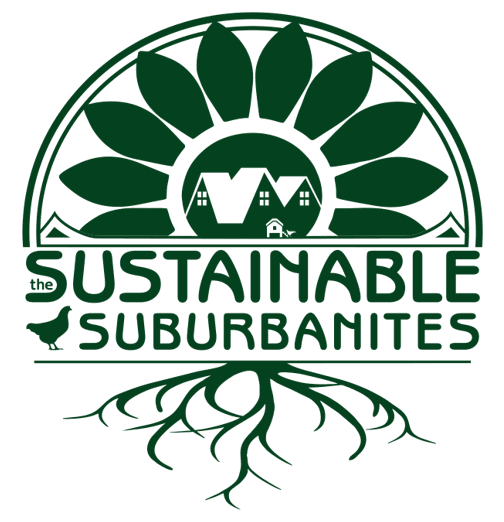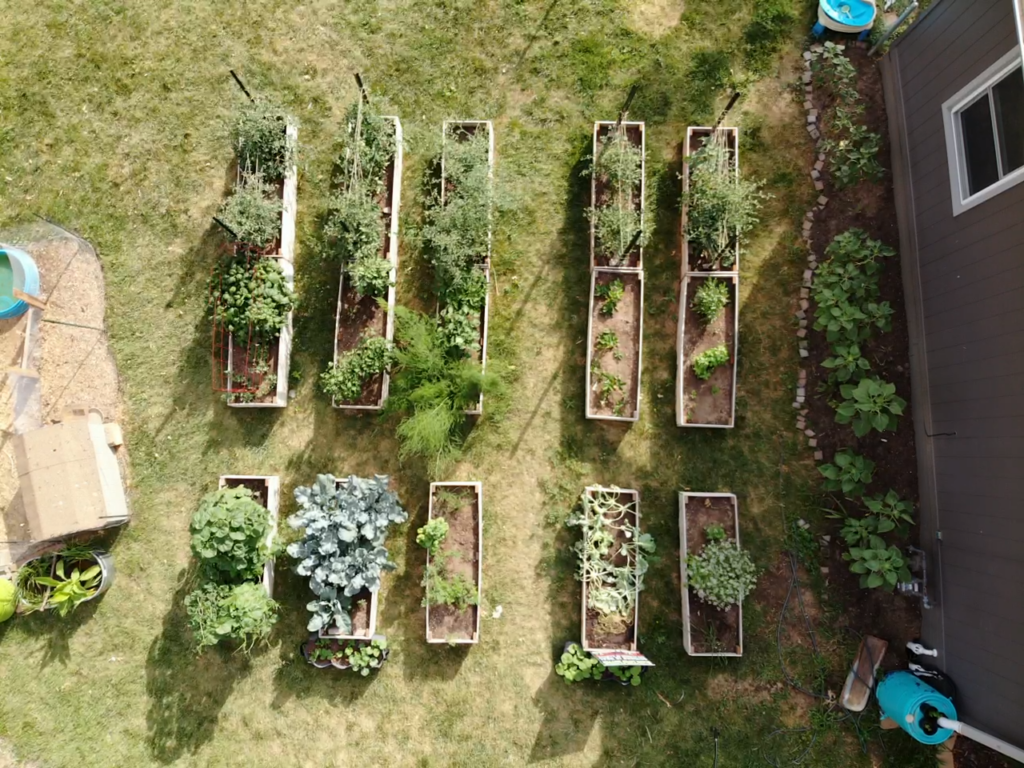This was our second year having a summer garden at our home. Summer 2021 was the first year that any of us had attempted to have a garden on a larger scale. I helped maintain a medium sized garden when I lived with my grandparents while Cade had a small garden while growing up. Ean and Morgan did not have any garden experience before we moved into our home. This resulted in having a variety of gardening experience in the first year of attempting a larger scale home garden. While our garden did produce last year, we made many rookie mistakes. This year we did our best to learn from last year’s mistakes and create an even better garden.
The Good
More Garden Beds
Last year we had ten six feet by two feet garden beds, this year we added five more for a total of fifteen garden beds. We chose to get more garden beds so we could space plants out more than last year and so we could dedicate five garden beds just to tomatoes. The additional space allowed our plants more space to grow and access to resources. With the additional garden beds, we were able to be more thoughtful with our planting this year instead of sticking everything in ten garden beds and hoping for the best.

A row of garden beds just for tomatoes
squash Tunnels
This spring we decided to invest in squash tunnels to give us more area to grow our produce. While slightly pricey, they were worth the investment. We were able to grow more plants and the plants we grew produced more than when grown in traditional garden beds. The nature of the squash tunnels allows the produce to hang down which makes it easier for harvesting and daily maintenance on the plants. We like our tunnels so much that we are buying one more to add to our collection for next spring. We will need the extra one to grow our loofah plants on them instead of growing them on bean supports.
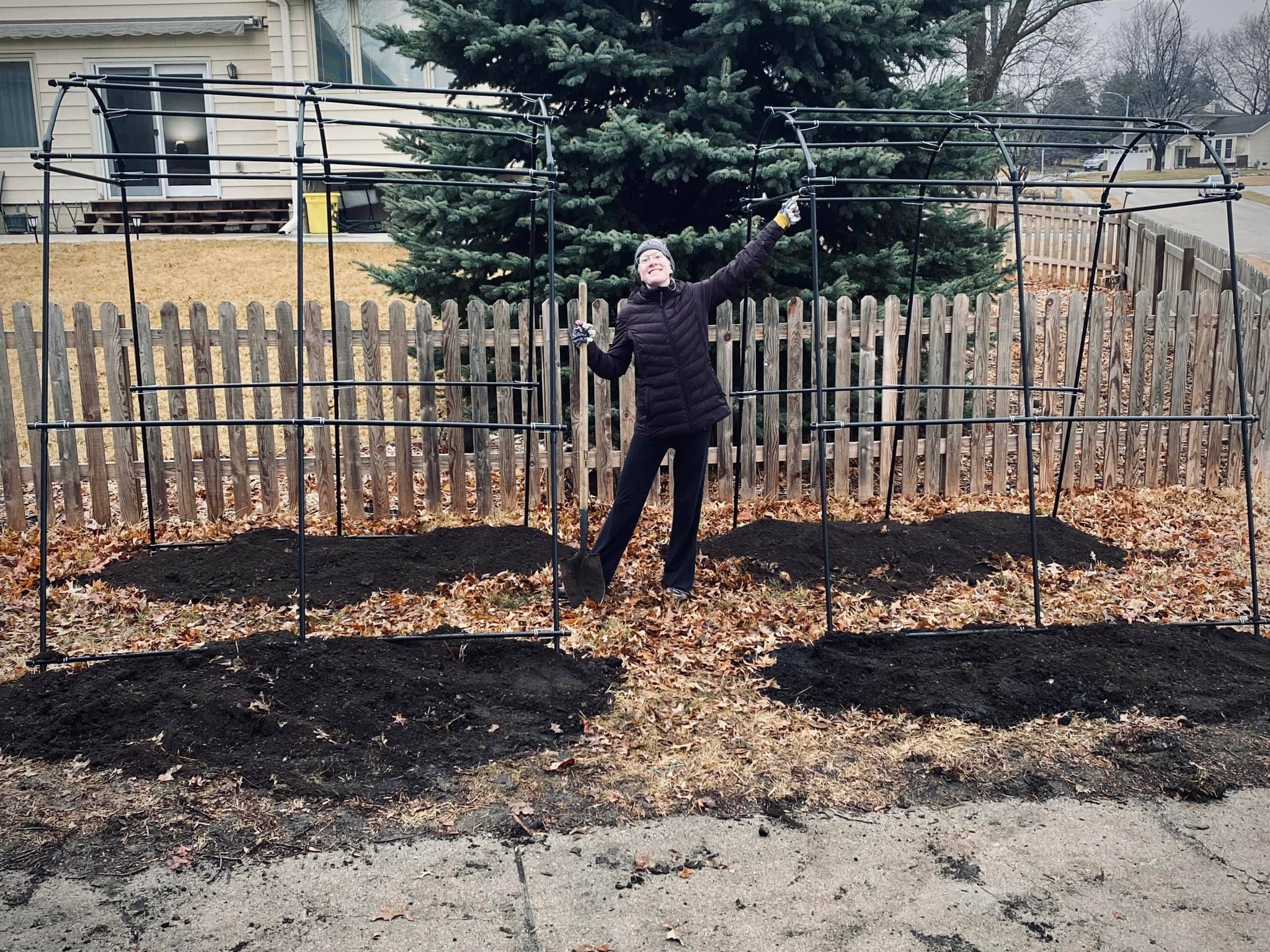
Morgan and our wonderful squash tunnels
Planning
Since we moved into our home at the end of March 2021 our first garden was a bit of a mess. It was not incredibly well planned or thought out and we simply planted things as we accumulated them and hoped for the best. This year we had more time to spend focused on the garden because we had settled into our home and things were slightly less chaotic (things are never completely chaos free at our house).
I mapped out the garden on a Google Sheet and made a key of what we were planting and when. Before we got anything in the ground I knew what we were planting, where we were planting, and when we were planting it. Due to the more detailed planning our garden was more successful than last year. I have already started planning for next year and already know some of what we are planting and where we will be planting it.

How we planned our Summer 2021 garden
The Bad
Seed Starting
The first issue that we had for this year’s garden was starting seeds in our basement. At first everything was going as planned. We had numerous varieties of seeds started, the correct number of plants (with spares just in case) and everything was labeled.
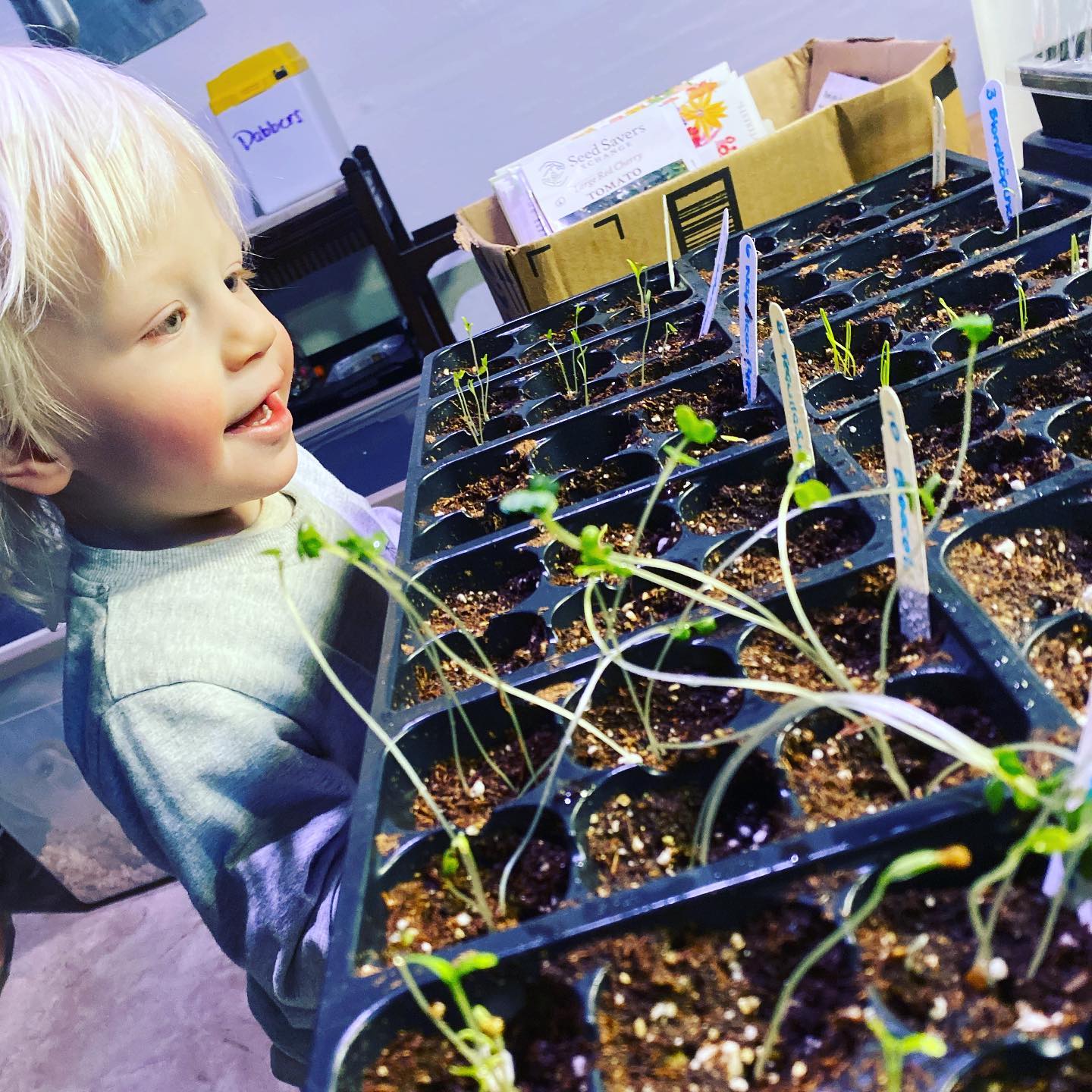
Litte Dude with our seedlings
All of our seeds germinated and it looked like we would have dozens of seedlings to transplant into our garden in the upcoming weeks. Then what felt like completely out of the blue, we did not have a single seedling left. Out of all the seedlings that grew, not a single one survived. Unfortunately seed starting for us this year ended up being an improper use of time and resources. On the other hand, all the seeds we directy sowed were successful and healthy.
Pests and Diseases
Due to blossom end rot, our tomato yield was significantly lower than what it could have been. It is likely that we lost pounds of potential harvest because of blossom end rot. While we ended up treating all of our tomato plants, the impact on our harvest was already done
Like our tomatoes, our zucchini yield was also adversely impacted. We believe that our zucchini plants ended up suffering from powdery mildew, which impacted our yield by shortening the lifespan of our plants. By mid July we had pulled all of our zucchini plants because they had completely rotted to the base of the plants.
While we are a big fan of having insects in our garden, there are a few bugs that we are not fans of. One of our varieties of pumpkin got infested with squash bugs. If our pumpkins were a little bit older, the squash bugs would have done little to harm our pumpkins. Unfortunately our pumpkins were in the flowering stage, so we lost a few plants and flowers due to the squash bugs.
The Lessons Learned
just get the big hose first
The first lesson that we learned this year is just to get this big hose the first time around. This spring we had to get a new hose because the hose we had last year got damaged and was no longer usable. So we obtained a new hose at the start of the season, only to discover that the hose was too short. When first purchasing the new hose we could not decide between the twenty foot hose and the thirty foot hose only to decide on the twenty foot hose. In the end, the twenty foot hose was not long enough for our ever growing garden. So we ended up getting a thirty foot hose and giving the twenty foot hose away.
Some plants just do not Grow Well
We discovered that some items simply do not grow that well in the conditions of our garden. For example, our Roma tomatoes struggled later in the growing season. After the heatwave in June our Roma tomatoes never quite got back to being healthy. While they did produce a little over the rest of the season the yield they produced was nothing compared to our other varieties of tomatoes. So while we are planning for the garden next year, we won’t include Roma tomatoes.
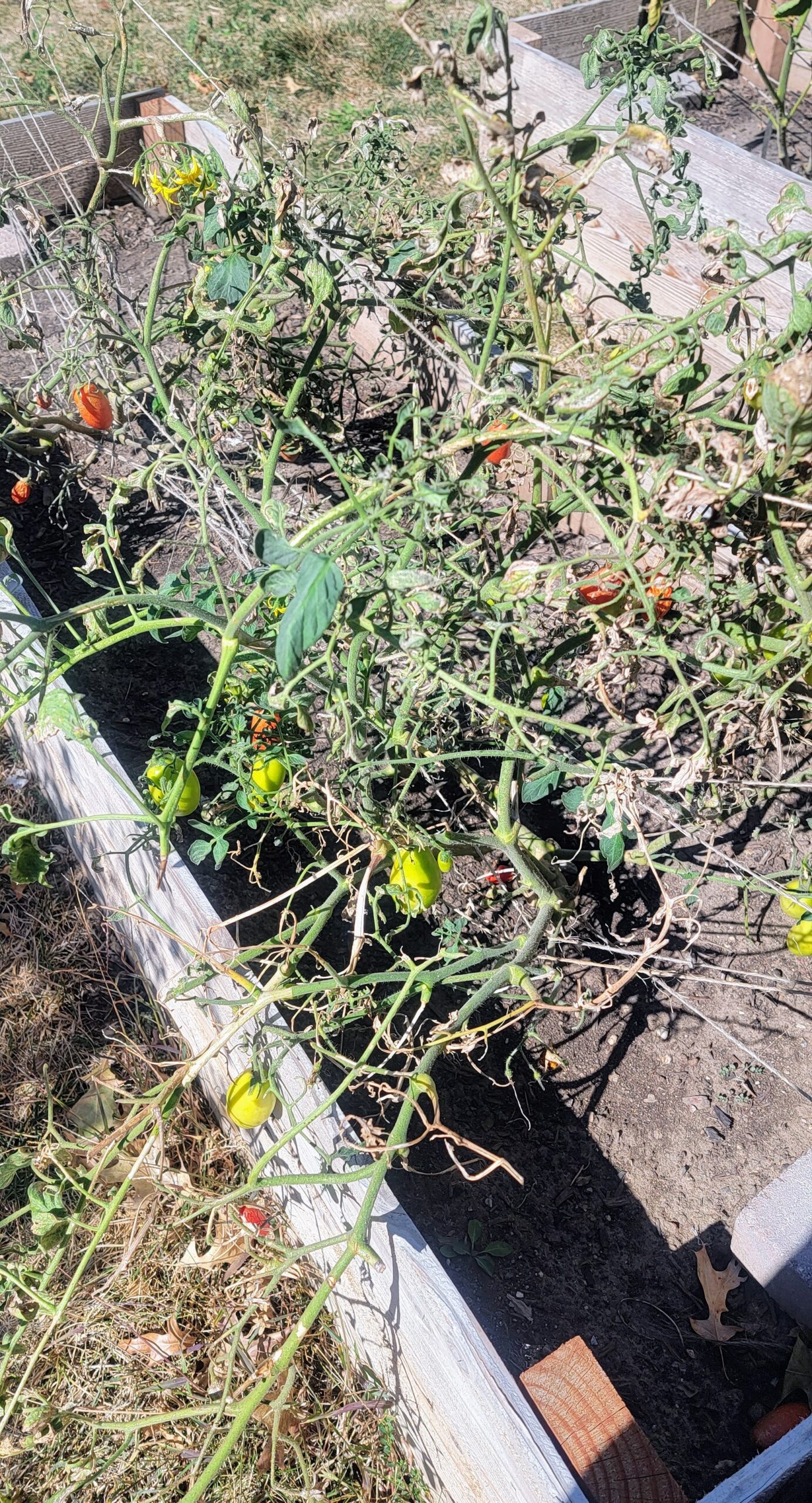
Some very sad Roma Tomatoes
Chop chop chop!
Part of the enjoyment of gardening is seeing the sea of happy green plants. So it felt counterintuitive to take a knife to a healthy happy plant to give it a trim. This year we experimented with regularly trimming our tomato and loofah plants and found that it helped increase the yield of our plants. Next year we will trim more of our plants on a regular basis, including our cucumbers.
Yield vs effort
The most important lesson we learned this year is the balance of effort put in vs yield produced. Over the past two years we have grown a variety of produce in a garden and have come to discover that we favor some plants over others. In particular we favor plants that produce a higher yield. While we love broccoli in our house, only two or three broccoli plants fit in one of our garden beds. Those two or three broccoli plants usually only yield two or three broccoli heads.
The amount of effort, time, and space put into broccoli simply does not produce a large enough yield to be the best use of our resources. Besides broccoli, we no longer plan on growing cauliflower, and kohlrabi. We will continue to focus on high yield plants like tomatoes, peppers, and beans. We will also focus on plants that have a shorter grow period including radishes, carrots, and parsnip.
While we had some failure this year, overall this year’s garden was a success. Our garden was a success not only because of the produce we grew, but the important lessons we learned. We know that for next year, the third time will be the charm for us. What garden lessons did you learn this year? Do you have sage gardening advice to share? Let us know below!
